Human Resource Management Practices and Organizational Performance
VerifiedAdded on 2023/04/20
|5
|924
|53
Report
AI Summary
This report provides a critical analysis of the article "Why complementary HRM practices impact performance: The case of rewards, job design, and work climate in a knowledge-sharing context" by Foss et al. (2015). The analysis identifies the authors' key arguments, which center on the alignment of motivating factors, job design, and work climate within organizations to enhance employee knowledge sharing and overall performance. The report evaluates the strength and validity of the authors' claims, supported by survey data from knowledge-intensive companies, and discusses the implications for future research and practical applications. Furthermore, the report briefly connects the article's findings to the context of two additional assignments, highlighting the relevance of knowledge sharing and employee motivation in addressing organizational challenges and improving HRM strategies. The report emphasizes the importance of understanding how HRM practices can be strategically implemented to improve organizational performance through employee motivation and knowledge sharing.
1 out of 5
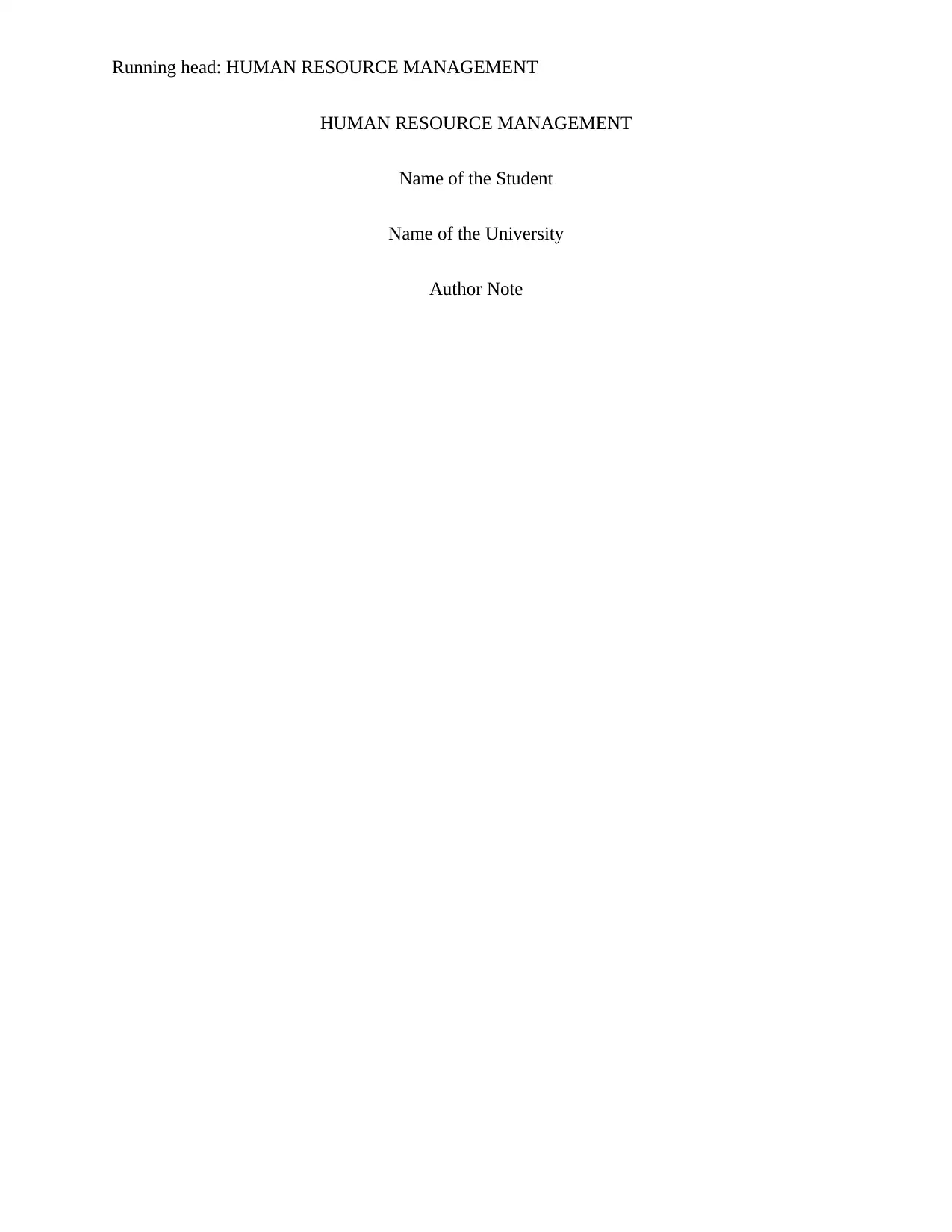
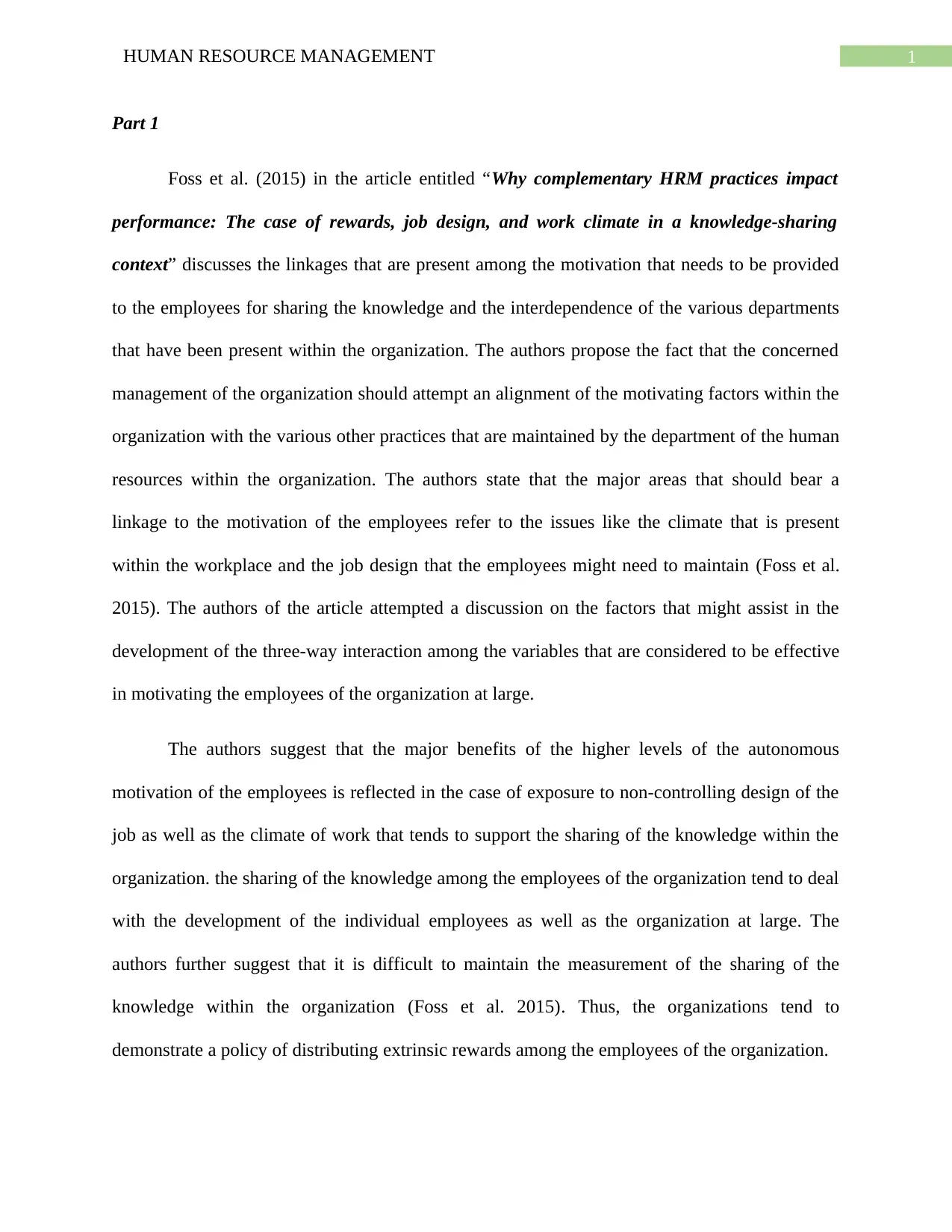
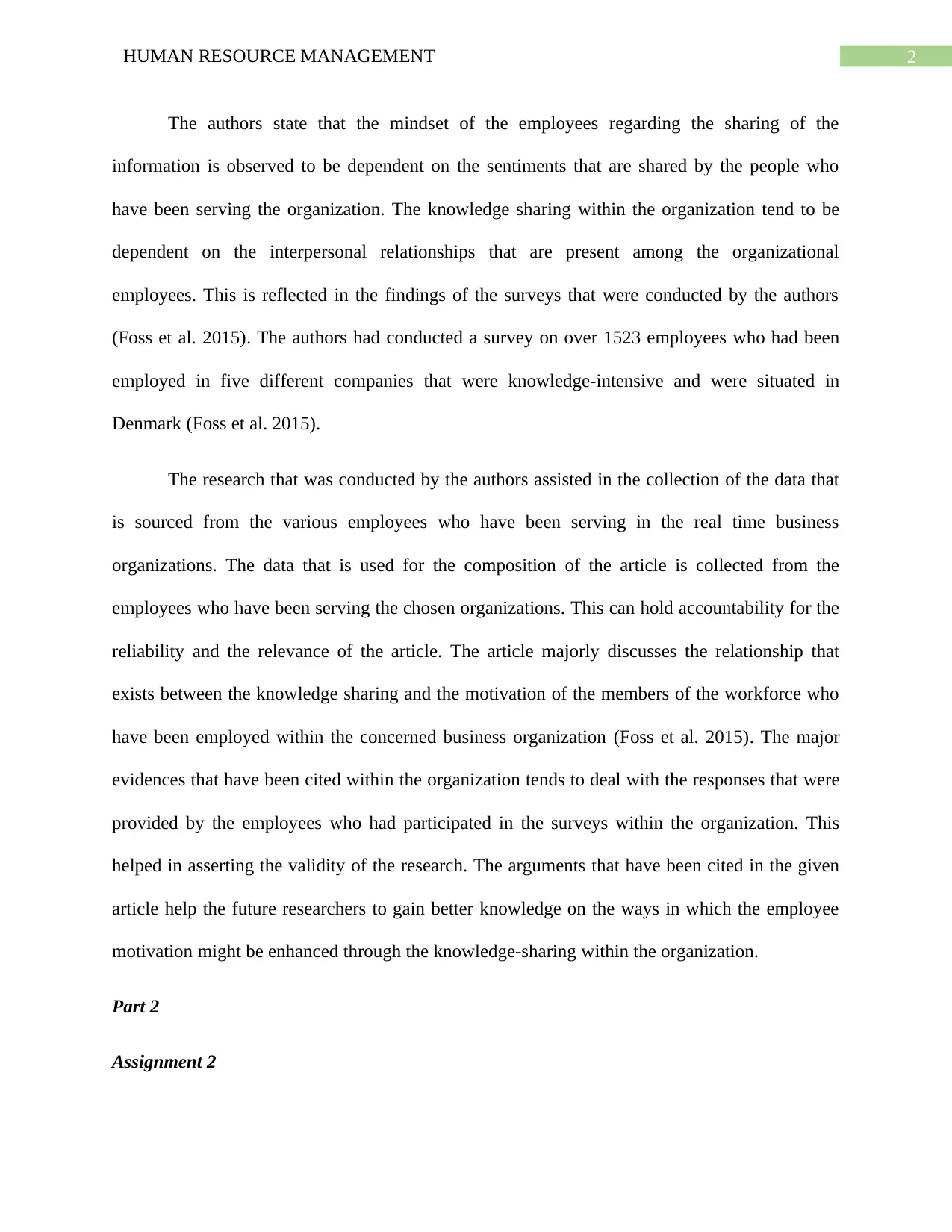

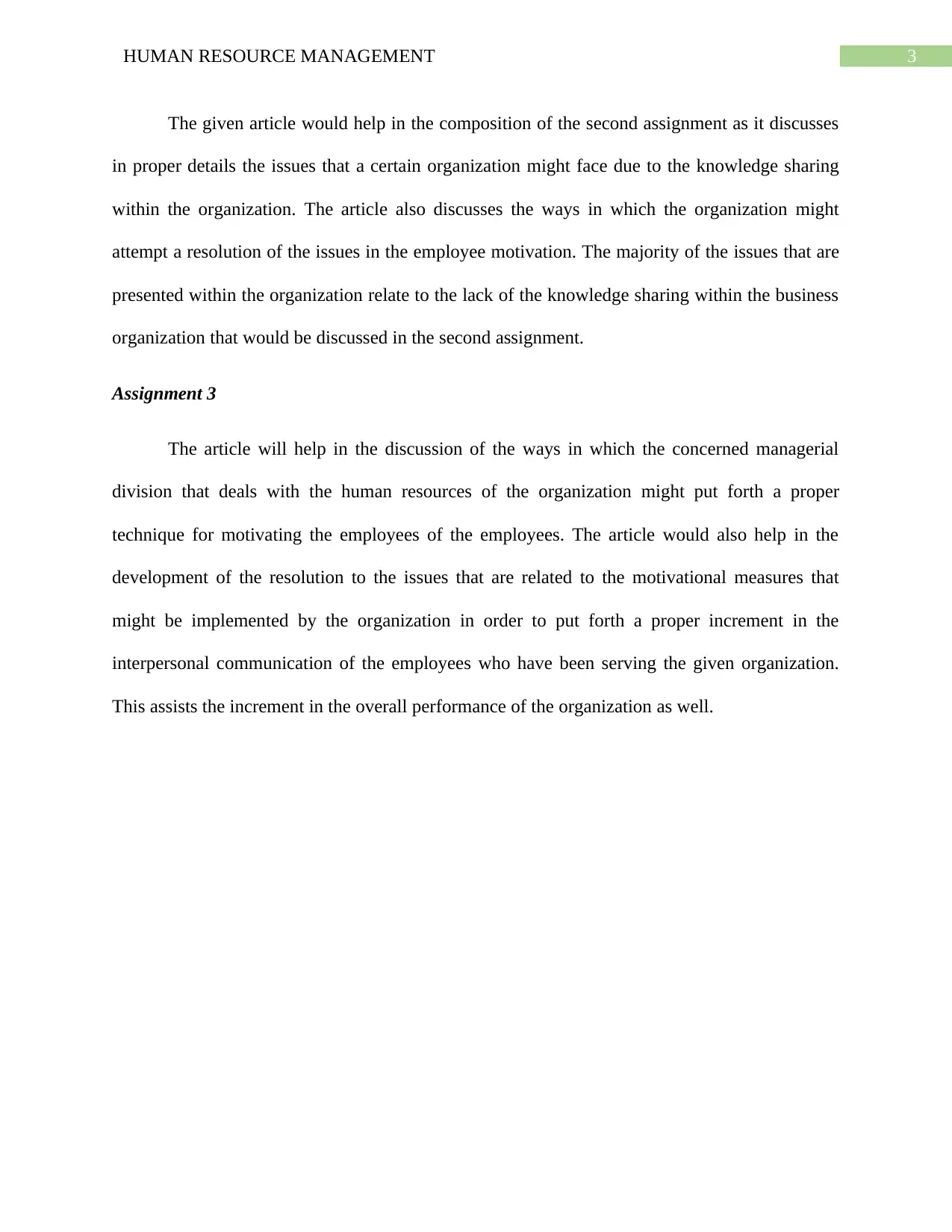
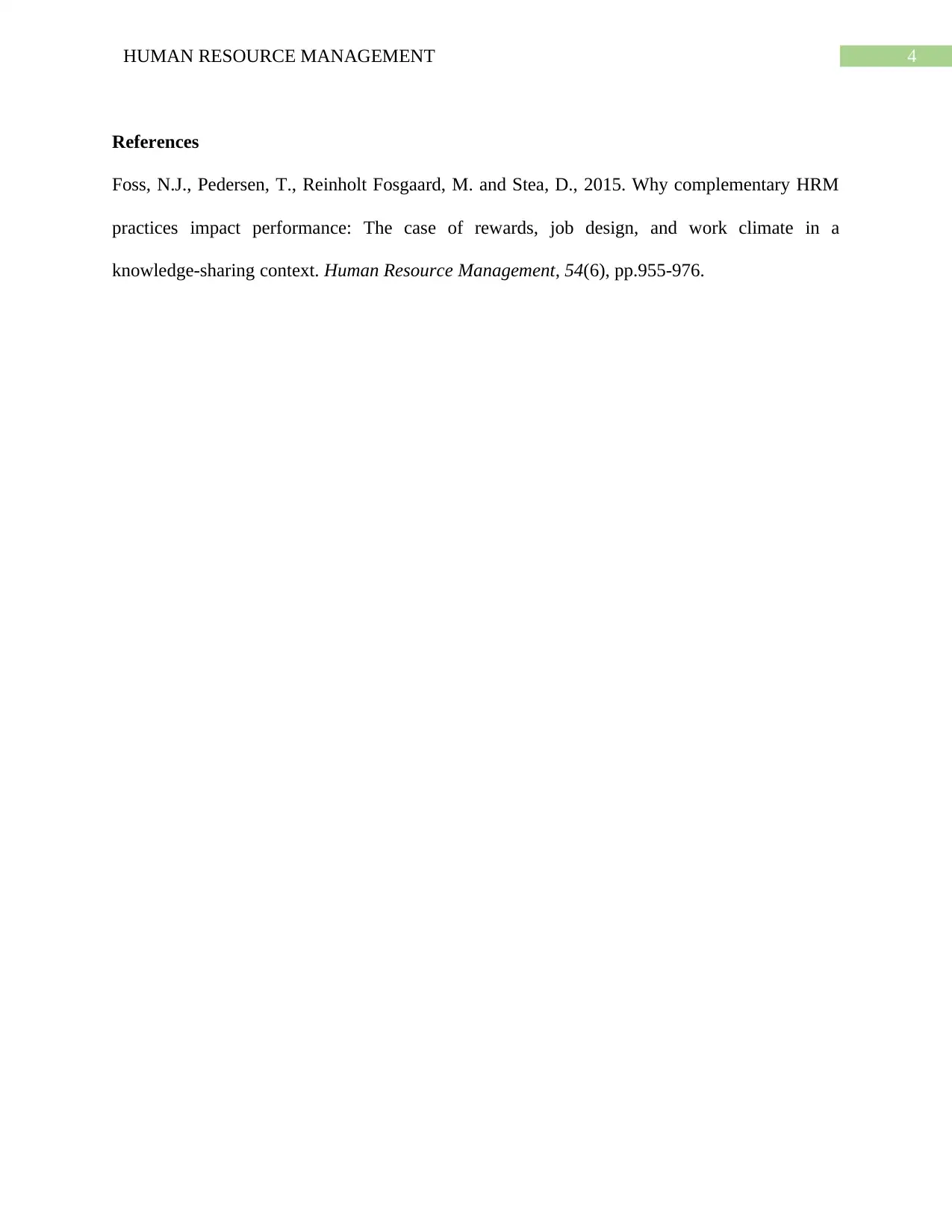





![[object Object]](/_next/static/media/star-bottom.7253800d.svg)